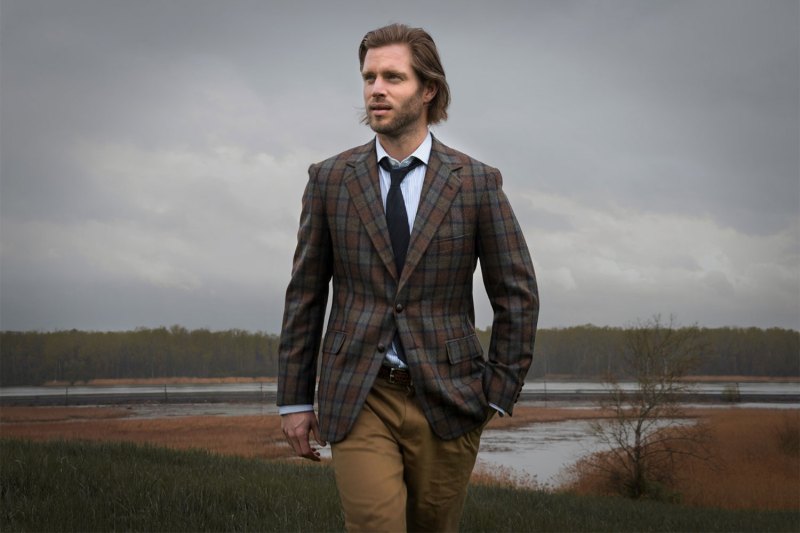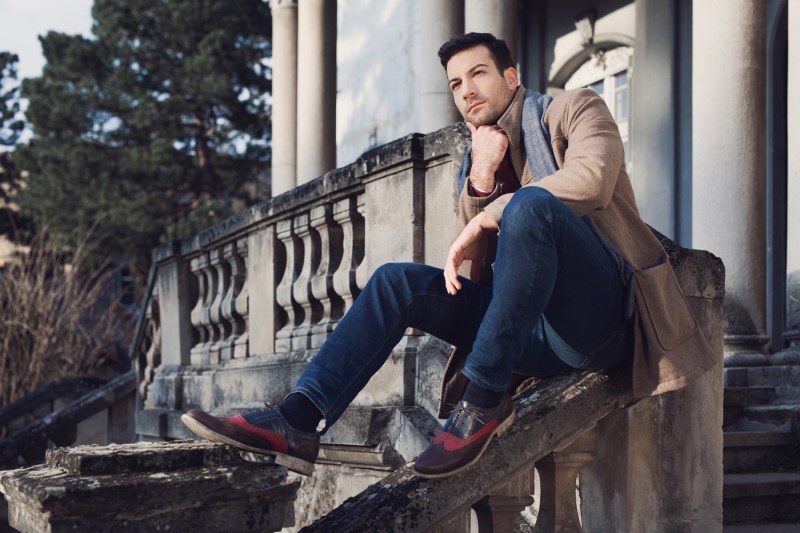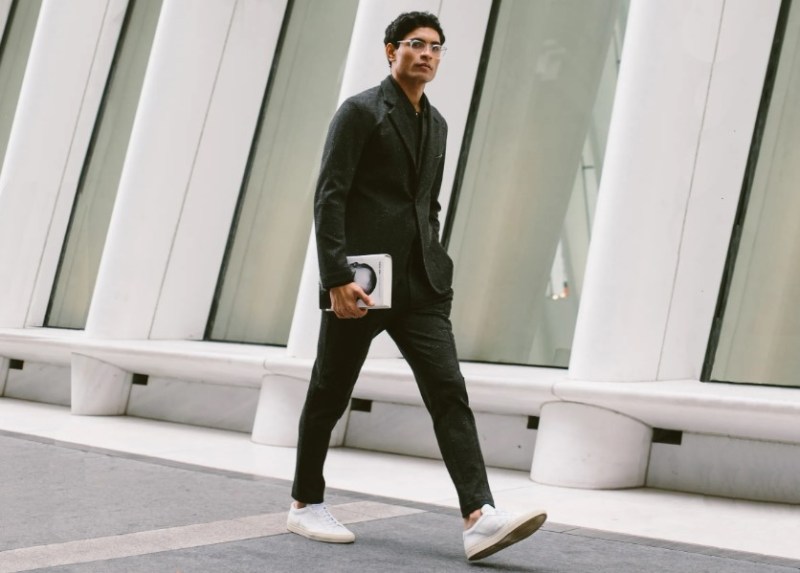
Dressing for the office used to be pretty straightforward. If you worked in an office, you wore a suit and a tie. There was no real reason to deviate, as many businesses that had offices were also client-facing workspaces. You only get one chance to make a first impression, and dressing for the occasion is the way to do that.
In the late 1970s and early ’80s, Silicon Valley became a place that prioritized results over everything else. While many businesses lived on processes, some of them antiquated, the tech field started to focus on processes in their product and letting their employees be comfortable in their wardrobes. Thus, the idea of business casual was born, and the suit became a whole other elevated level of office wear.

What is business casual?
Ah, the decades-old question: What do employers mean when they say “business casual?” Here’s the rub: There isn’t a straightforward answer. Every company has a different idea of what the phrase means and what’s appropriate for their workspaces. The one thing that is for certain is that the dress code is more elevated than streetwear but not quite formal enough for a suit. Where your company falls on that spectrum is going to depend on the company’s mission.
Let’s start with the basics. If you work in a place that has a vague business casual dress code, here’s a good starting point to get you going in the right direction and help you figure out how to actually dress business casual.
Shirts: Replace your typical dress shirt with a more casual version with a button-down collar. Patterns work better in this level of dress because you can ditch the tie.
Pants: Ditch the dress pants. Your dry-clean-only pants can go in the closet, and you should invest in a few pairs of elevated chinos.
Shoes: Dress shoes are a sure way to upgrade almost any outfit. However, dress shoes could be a little too elevated for business casual outfits. If you want a pair of shoes that can elevate some outfits and tone down others, opt for some Chelsea boots.

What should you not wear for business casual?
While there’s a wider variety of garments that you can wear while dressing in business casual, there are some garments that you should avoid wearing, either because they’re too formal or too casual. Business casual takes the spectrum of clothing levels from streetwear to formal wear and cuts off the extreme ends to focus on the middle.
Shirts: Obviously, you shouldn’t be wearing your formal tuxedo shirts, and almost no one will try to find ways to work them into their wardrobe. However, you will start to see people work a T-shirt into their office wardrobe. Even an elevated luxury T-shirt falls too far toward the casual end of the spectrum.
Pants: Dress pants are going to be a little closer to the formal side of the business casual spectrum. However, while they can be acceptable to wear with an open-collar dress shirt, they are typically more expensive than chinos and should be reserved for more formal environments.
Shoes: There are essentially only two kinds of shoes that we would recommend not wearing with your business casual attire. Your athletic sneakers and your steel-toed work boots won’t work in the office. Sure, if you’re a construction worker and have some office time, you may be wearing these, but you probably aren’t wearing business casual attire. More likely, you’re simply putting a polo on over your workwear.

Can you wear jeans as business casual?
The short answer is yes, but there are some caveats if you want to wear jeans to work. The first rule for wearing jeans in an environment where jeans are not typically considered your go-to is to wear upgraded jeans. Dark dress denim is what you’re looking for. You absolutely shouldn’t be wearing the same jeans you wear when you bum around the house on the weekend. These should be a dark wash and in a slim silhouette.
The second rule is to elevate them. Jeans are the ultimate in casual attire, which means they’re built for streetwear or more rugged outdoor work. They were never designed for the office, but after years of expanding the uses of denim, they can now be worn to work as long as they’re the most casual item you wear. Pair them with a sport coat and dressier shoes or Chelsea boots, and you can absolutely pull off jeans in the office.

Can I wear sneakers for business casual?
The rules for sneakers in business casual are similar to the jeans rules above. One, they should be upgraded, and they should be what many shoe companies call dress sneakers: Slim silhouette, leather tops, and soft-soled. Two, they should be the most casual garment in your outfit. Pair these with chinos and a sport coat to take these sneakers to a higher level of the dress code spectrum.

Where does smart casual fit into the business casual spectrum?
There is another dress style that can get into the mix here, and that is smart casual. This is a step up from business casual and a step down from formal wear. It sits in the middle of the formality spectrum, aiming for a polished yet relaxed look. Here’s a breakdown of its key characteristics:
- Balanced: Combines elements of both casual and professional attire.
- Polished: Requires you to wear clean, wrinkle-free, and well-fitting clothing.
- Comfortable: Allows for some freedom of movement and personal style.
- Professional: Suitable for most office environments, business meetings, and some formal events.
Here’s a quick example: Dress pants with a button-down shirt and blazer, or chinos with a polo shirt and loafers.
When it comes down to it, business casual is a tough and vague statement that can be highly confusing. Some businesses will lean more toward the formal side and want to see sports coats daily without requiring a tie. Other companies will lean more on the casual end and ask you to simply wear chinos and a polo.
Either way, the best way to approach a business casual environment is to lean more formal until you learn what others around you are wearing, then find your place on the spectrum. Just remember that the higher up you go in most companies, the higher on the dress spectrum you will go. In other words, dress for the job you want, not the job you have.
Editors' Recommendations
- A day at the races: How to dress for the Kentucky Derby
- Men’s fashion: These casual styles for men will keep you looking cool while staying warm
- Men’s fashion tips: The 16 essential rules every well-dressed man should know
- Business casual shoes for men: 5 styles every man should own
- Travel experts reveal what you should never wear on a plane



